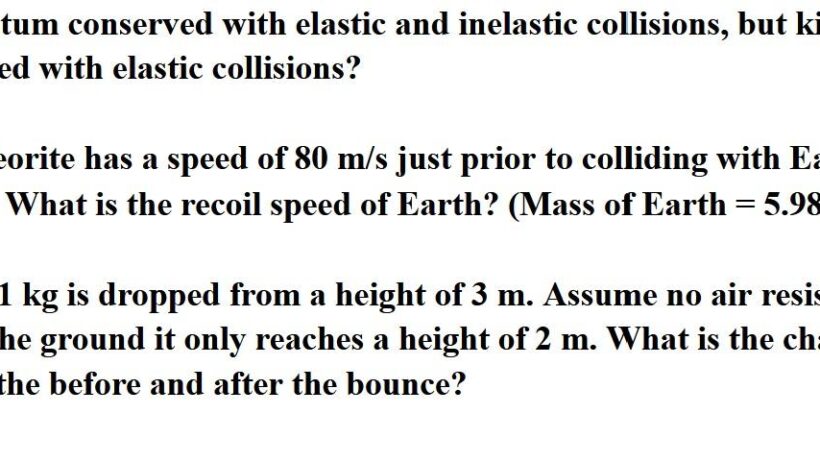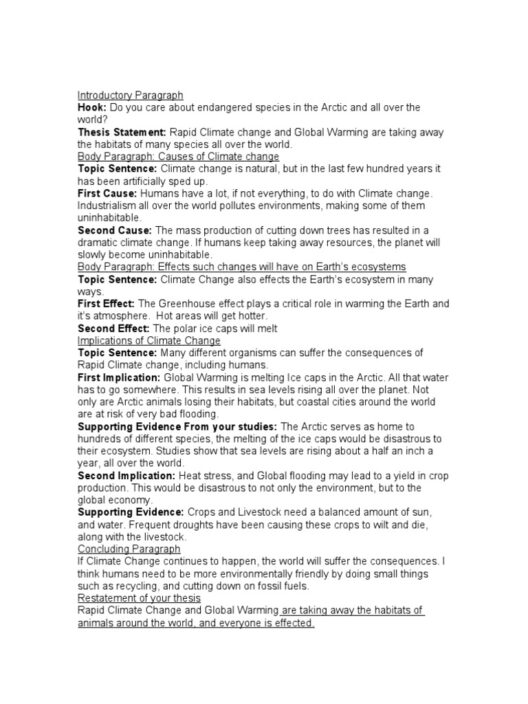Energy is a fundamental concept in physics, underpinning the very mechanics of our universe. Within the realm of collisions, the conservation of energy is intricately tied to the concept of elasticity. To unpack this topic, we can distill it into two primary categories: elastic and inelastic collisions. As with a chameleon that adapts its colors to blend in with its environment, so too do these collisions transform the properties of energy as they interact. The differing manifestations of energy conservation in these two forms of collisions provide a striking example of physics in action.
First, let’s delve into elastic collisions. Imagine a room filled with perfectly bouncy balls, all poised to collide with one another. When these balls—a metaphor for particles—collide, they do so in a manner that preserves both momentum and kinetic energy. In the microscopic world, elastic collisions permit no loss of energy; instead, the energy is transferred seamlessly from one colliding particle to the other. This is akin to a well-orchestrated dance, where each dancer maintains their grace and poise while effortlessly exchanging leads, producing a beautiful motion that culminates in a harmonious outcome.
Mathematically, this principle is succinctly governed by the laws of momentum and kinetic energy. For two objects colliding elastically, the equations can be represented as follows:
- Conservation of Momentum: m1v1i + m2v2i = m1v1f + m2v2f
- Conservation of Kinetic Energy: ½m1v1i2 + ½m2v2i2 = ½m1v1f2 + ½m2v2f2
Here lies the charm of elastic collisions: The total mechanical energy remains unchanged. The exuberant flow of kinetic energy from one object to another creates a vivid illustration of energy preservation in its purest form.
Contrasting sharply with elastic collisions are inelastic collisions, where energy conservation takes on a different character. Picture a pile of dough that some fervent baker is kneading; as the baker strikes the dough, energy is imparted, yet not all is returned in the form of kinetic motion. In an inelastic collision, although momentum is still conserved, kinetic energy undergoes a transformation, dissipating into various forms such as thermal energy, sound, or deformation energy. This phenomenon epitomizes the chaotic ballet of particles where some energy is irretrievably lost to the surroundings, just as heat escapes into the air during the kneading process.
To illustrate this, consider two cars colliding in a bustling intersection—each vehicle crumples upon impact, absorbing energy into twisted metal and crumpled frames. While momentum is conserved, the kinetic energy before the impact is greater than the kinetic energy post-collision. Thus, we can express this mathematically as:
- Conservation of Momentum: m1v1i + m2v2i = m1v1f + m2v2f
- Kinetic Energy: ½m1v1i2 + ½m2v2i2 > ½m1v1f2 + ½m2v2f2
This nonlinear relationship points to an astute truth: energy does not always remain as kinetic energy, but rather shifts into forms that may seem less useful at first glance. The conversion of energy into sound and heat during an inelastic collision serves as a reminder of the unpredictability of energy dynamics.
Let’s also consider the collision types in a broader context. In real-world scenarios, most collisions are neither perfectly elastic nor perfectly inelastic; instead, they lie on a continuum. Such hybrid collisions exhibit characteristics of both types, making the study of energy conservation a complex yet captivating field. Picture the dance floor once more, where at some moments, dancers glide with elegant precision, while at others, they clumsily collide, expending energy in awkward, ungraceful ways.
In summary, energy conservation within collisions can be likened to two sides of a coin. Elastic collisions preserve kinetic energy much like a well-timed exchange of gifts at a birthday party, while inelastic collisions scatter energy akin to confetti tossed into the air—unrecoverable and evanescent. Understanding these fundamental principles not only enriches our grasp of physics but also deepens our appreciation for the intricate dance of energy that unfolds in every collision.
As we contemplate the interplay of elastic and inelastic collisions, we find ourselves at the center of an energetic tapestry, woven by the threads of momentum and energy conservation. Each collision serves as a reminder of the foundational laws governing our physical world—laws that underpin everything from simple games to the most complex phenomena in our universe.








